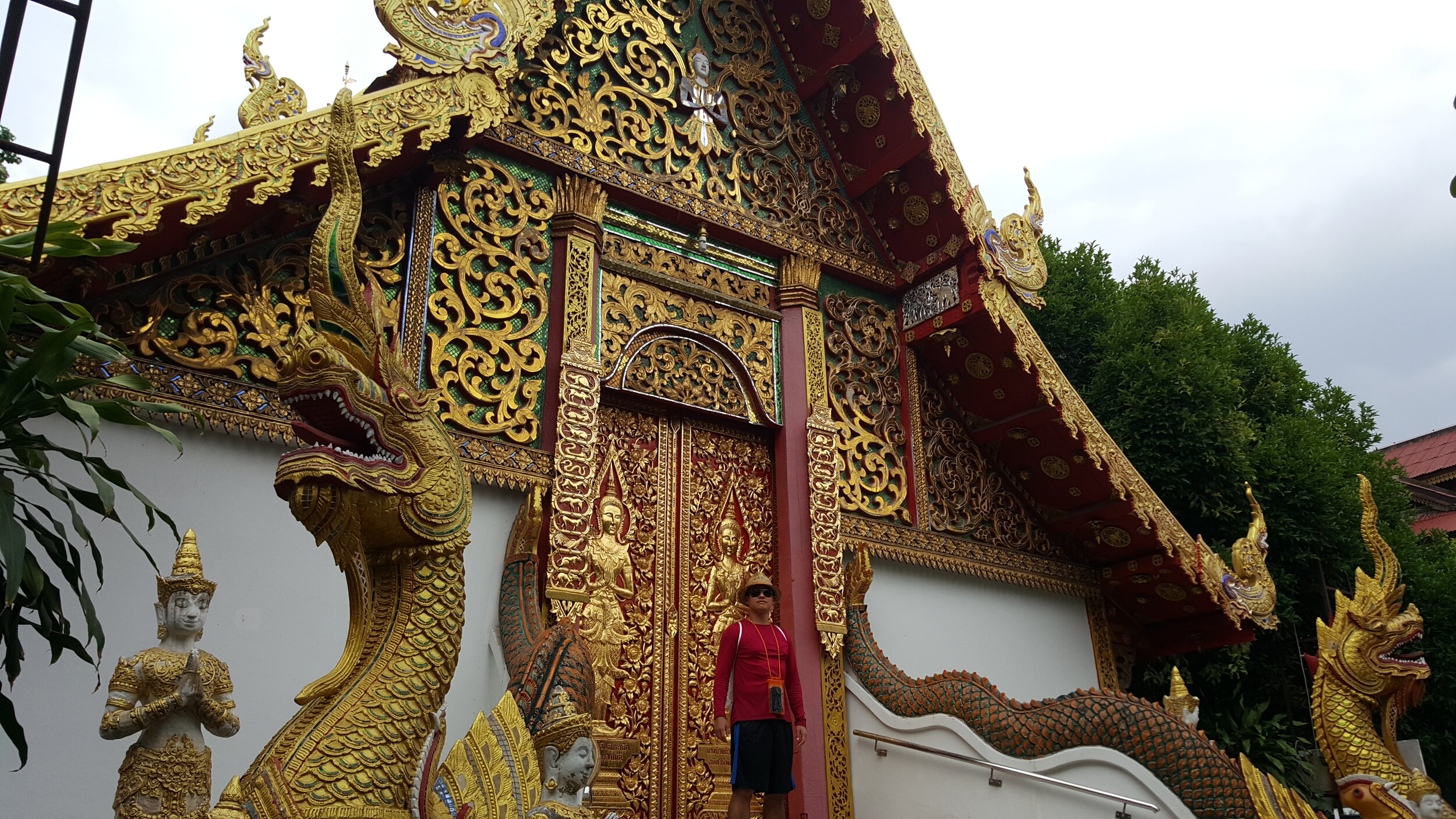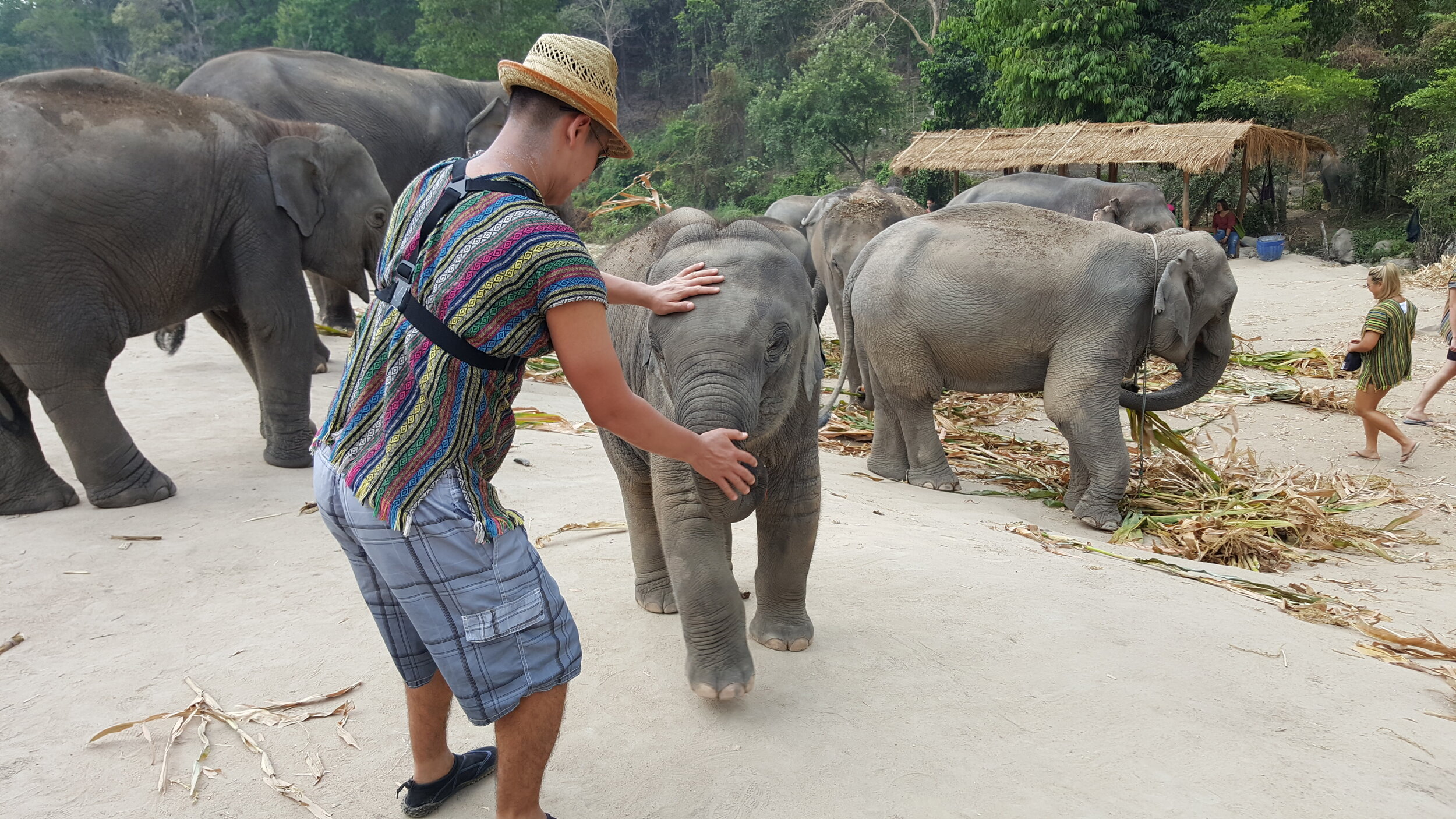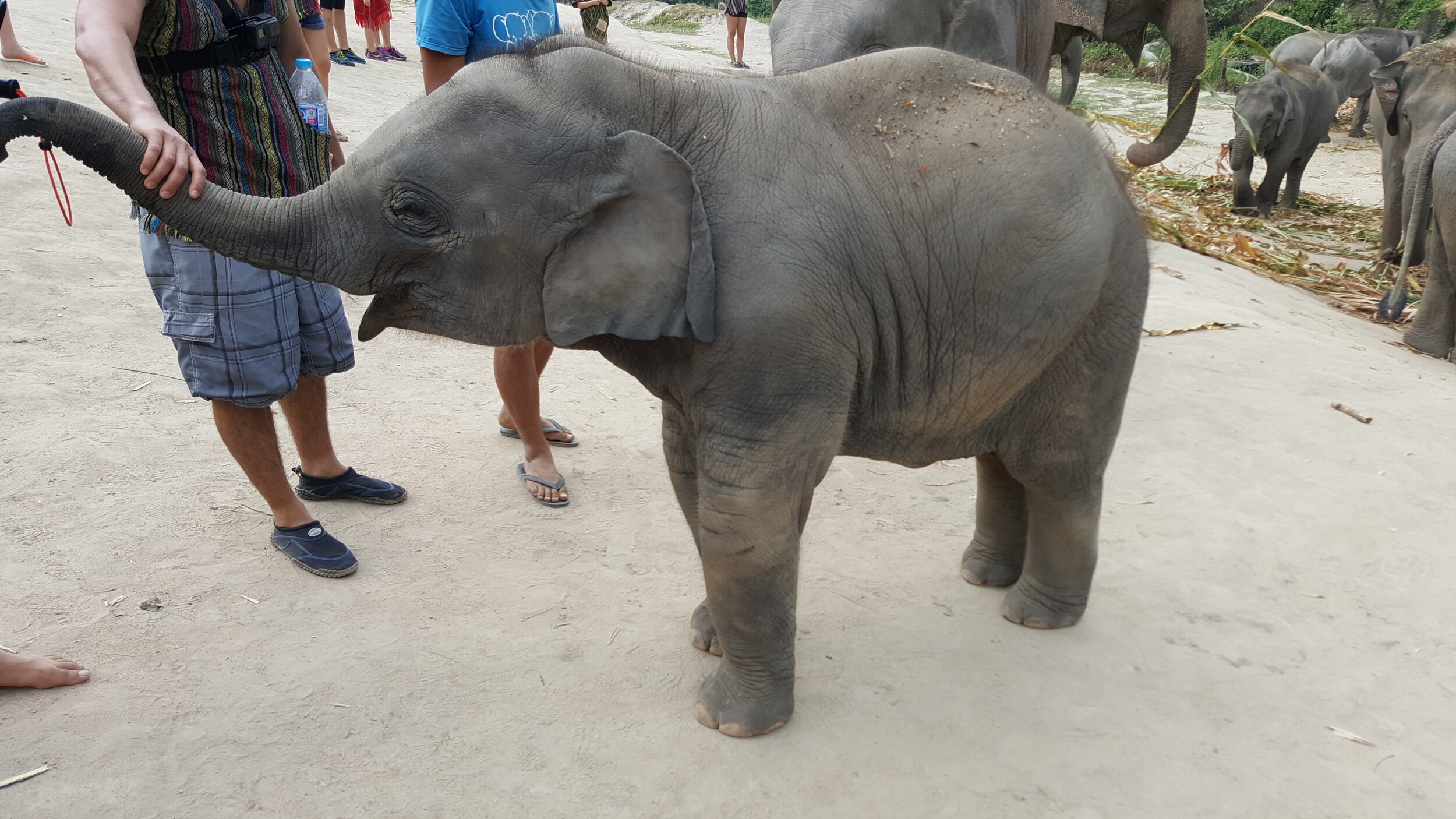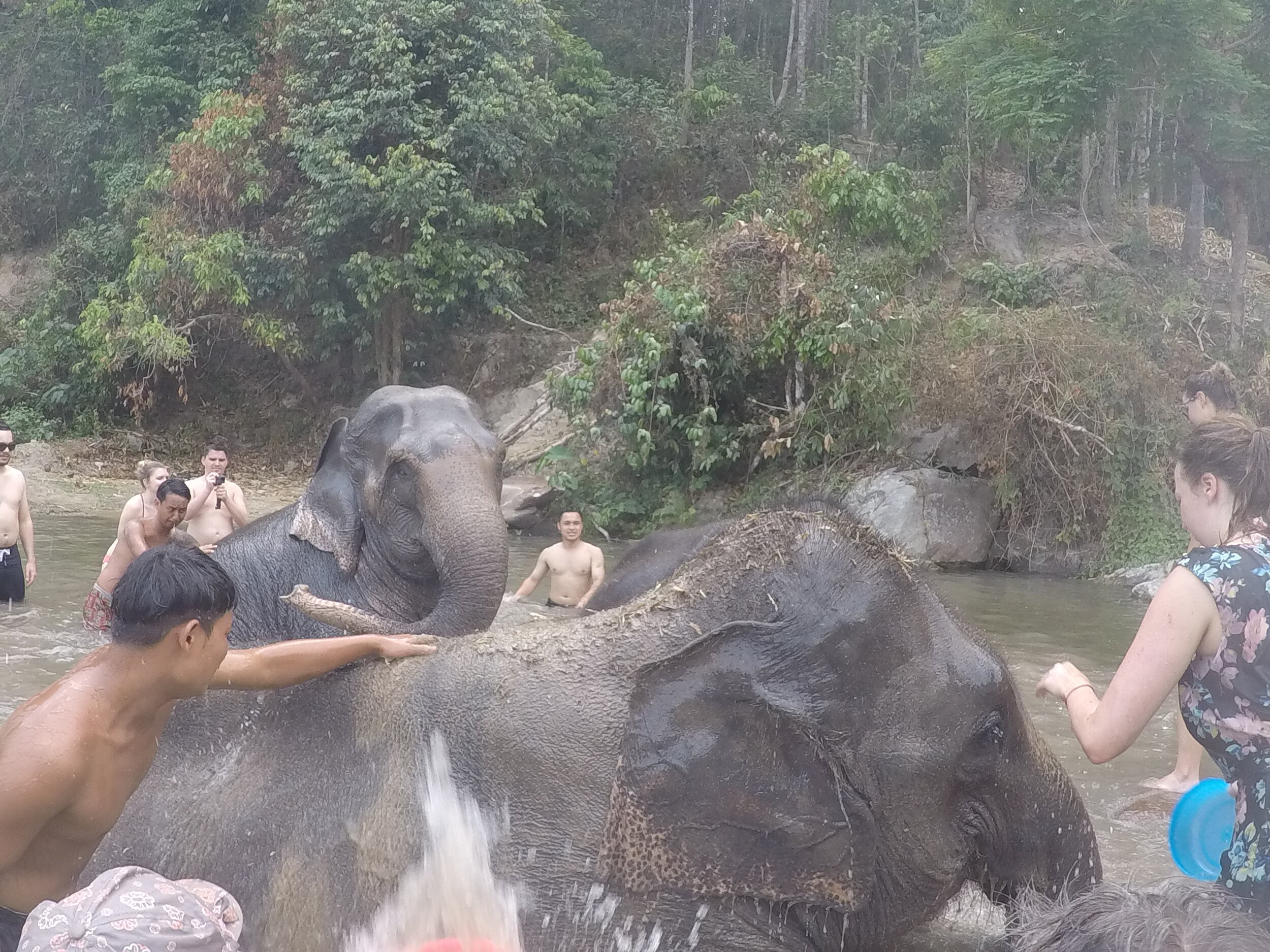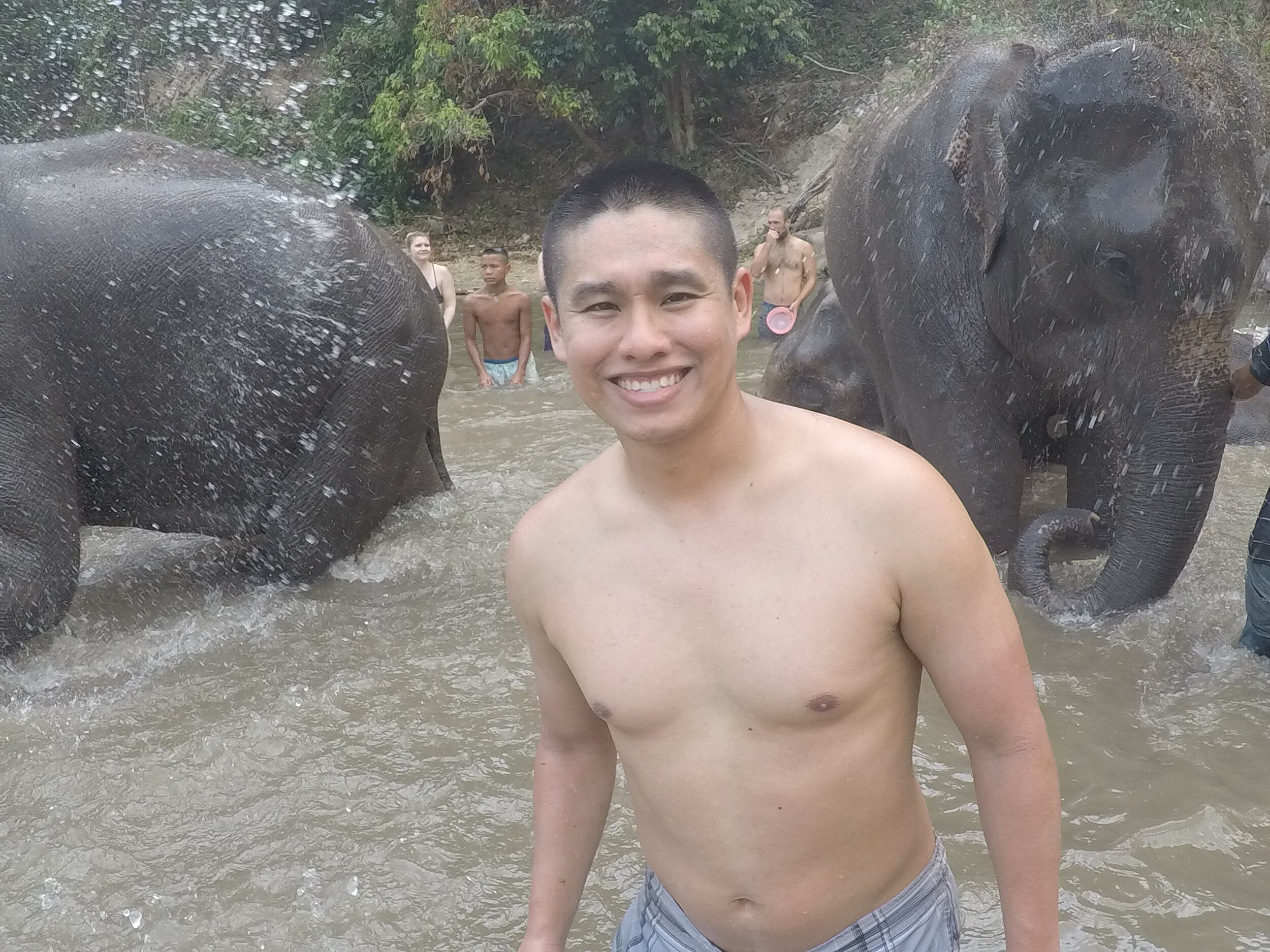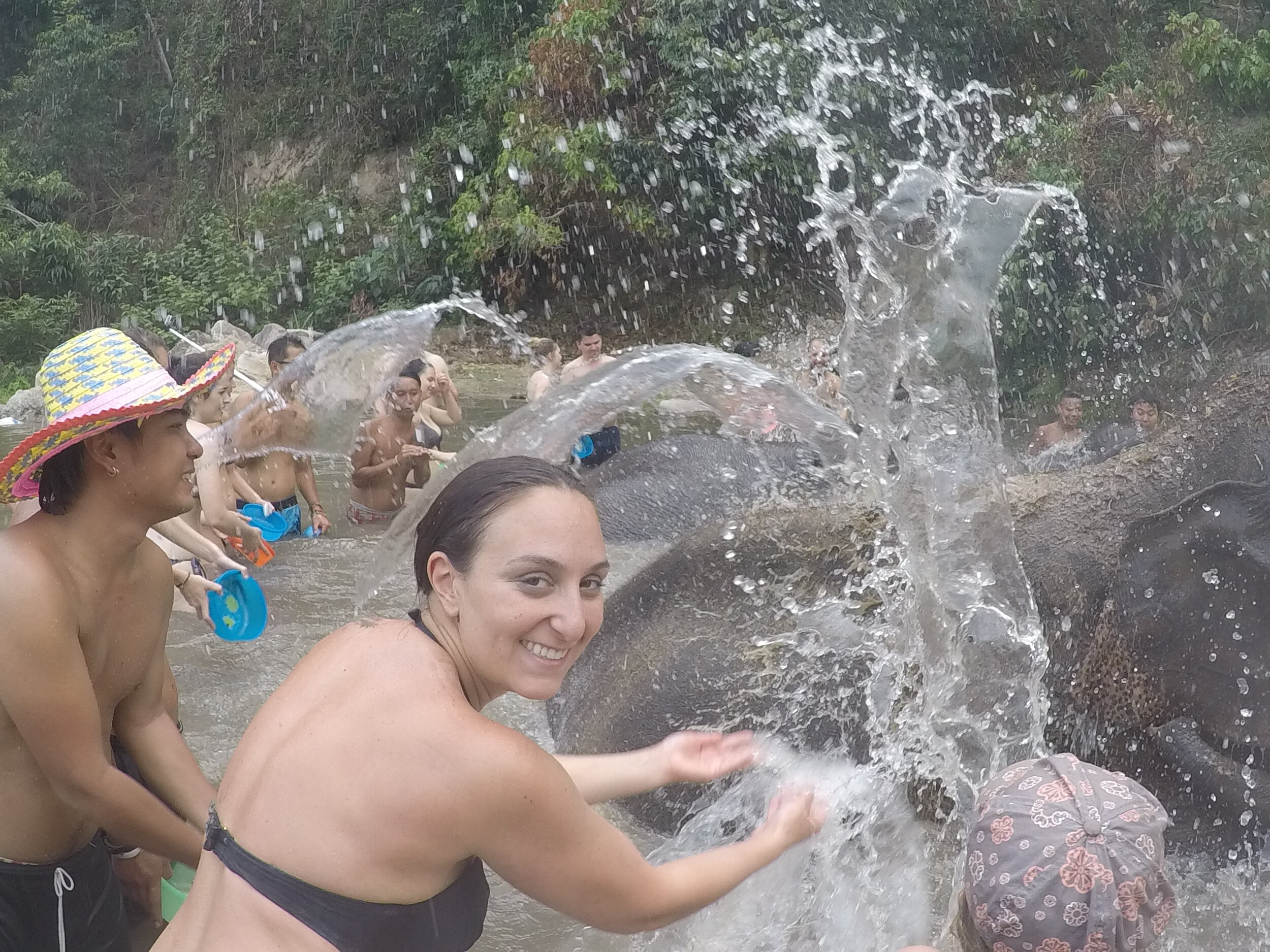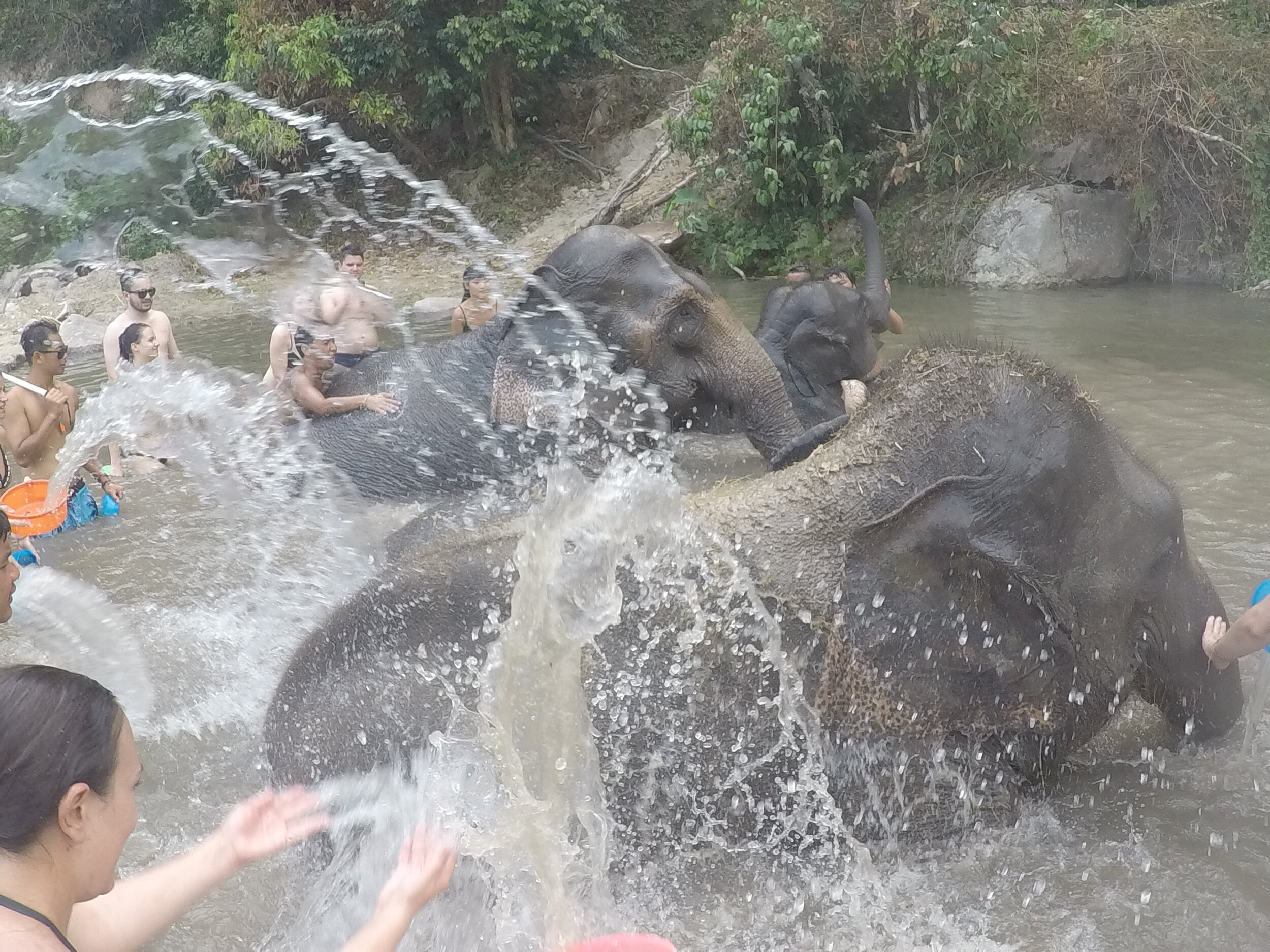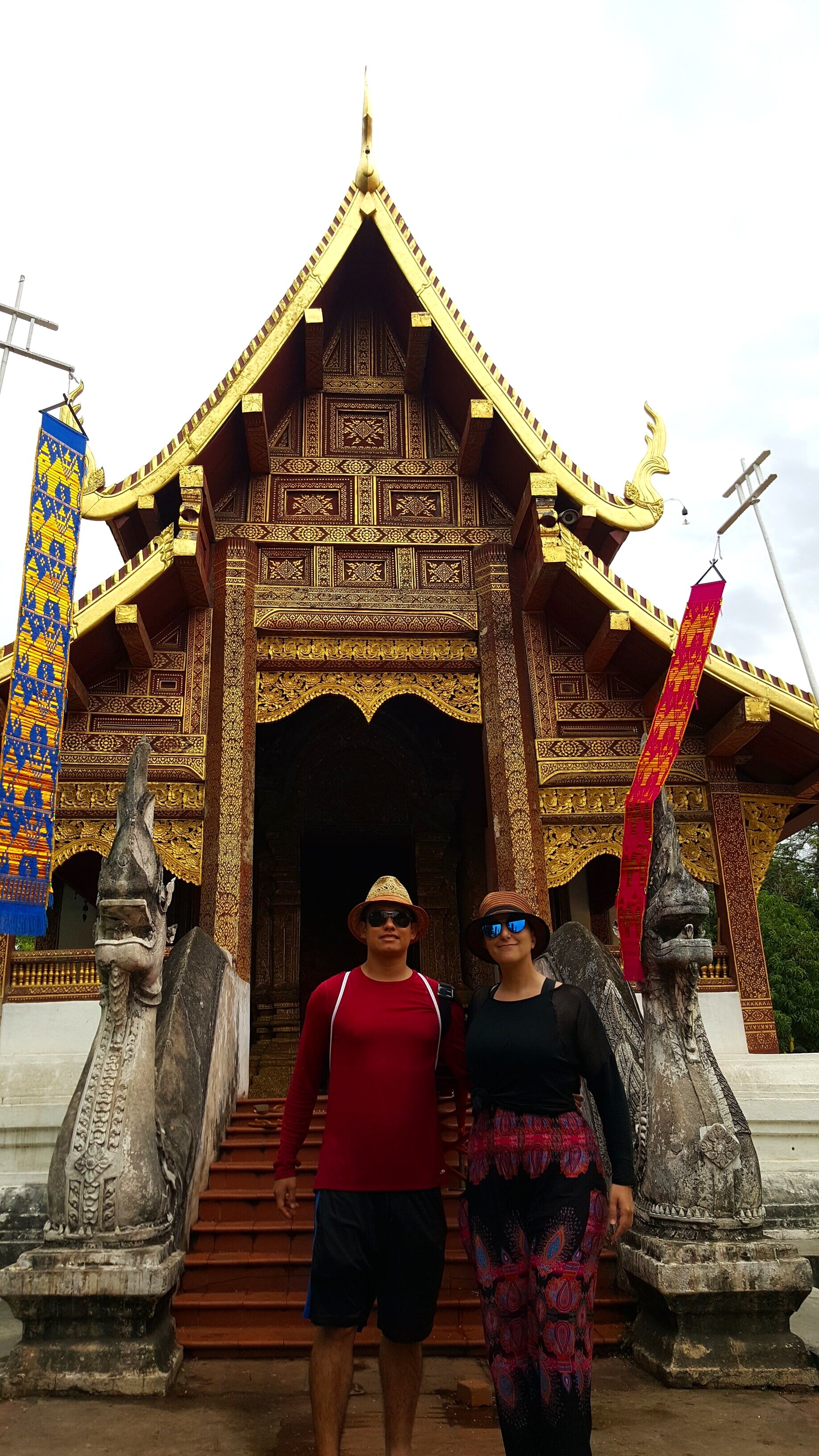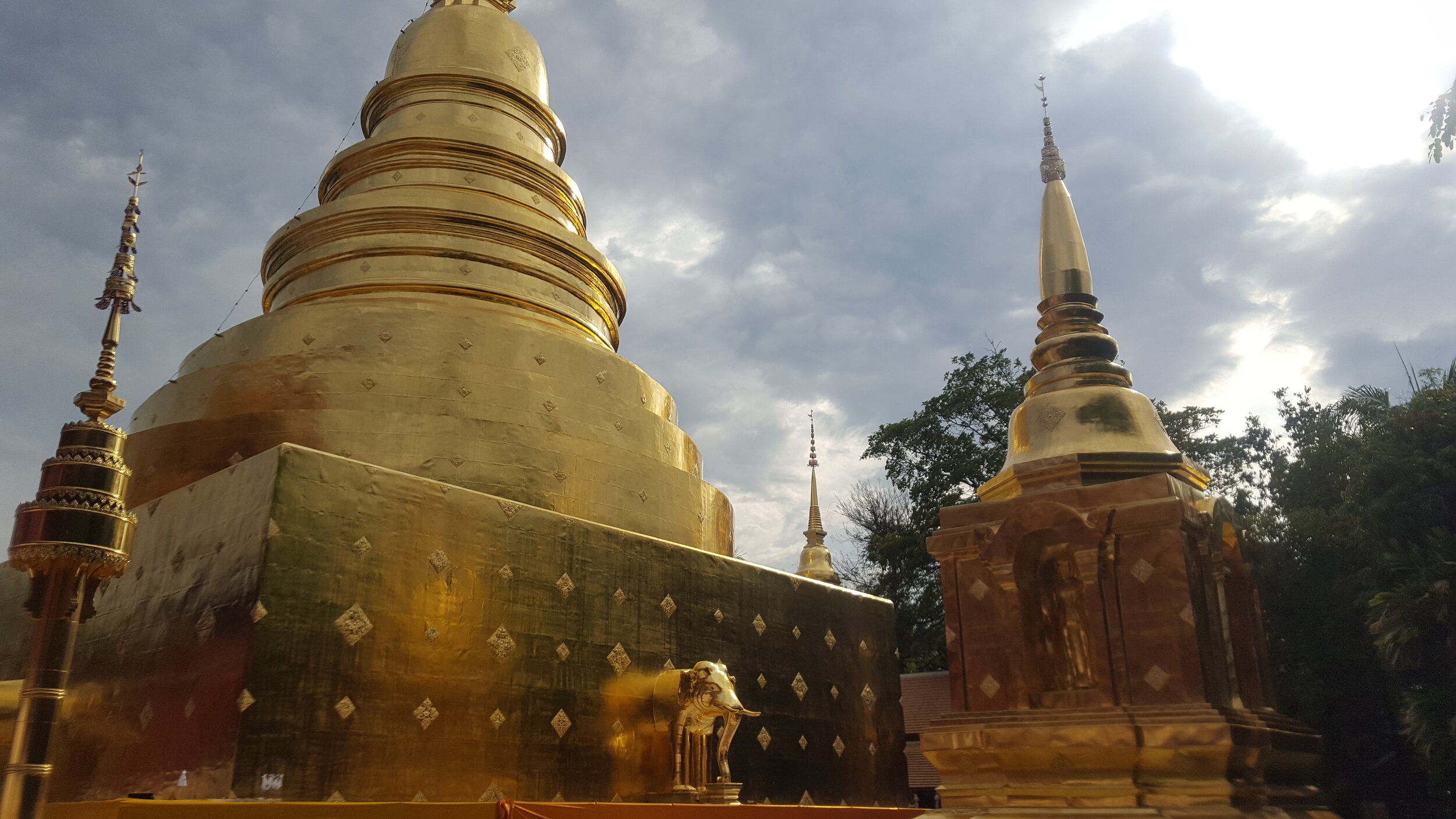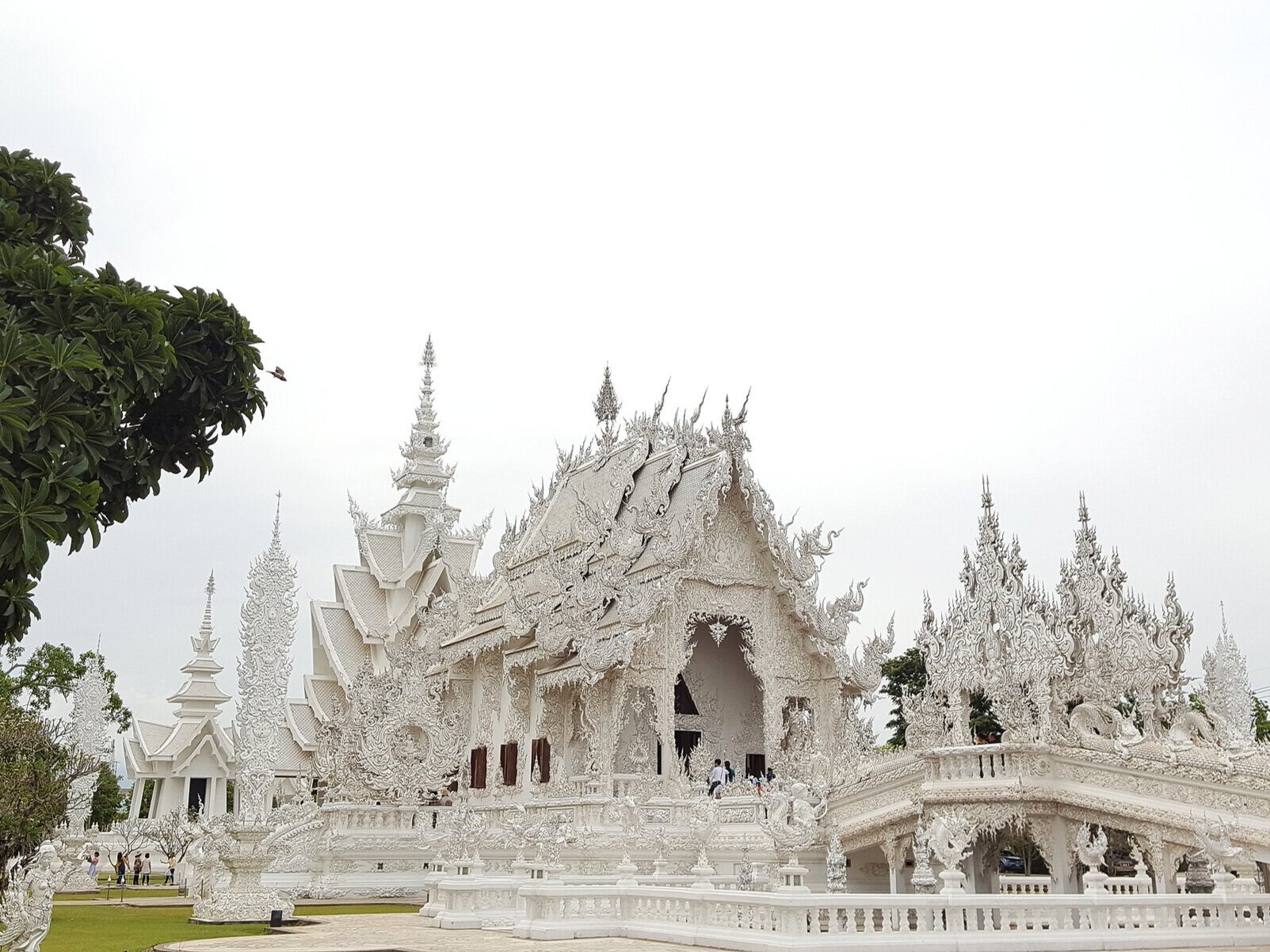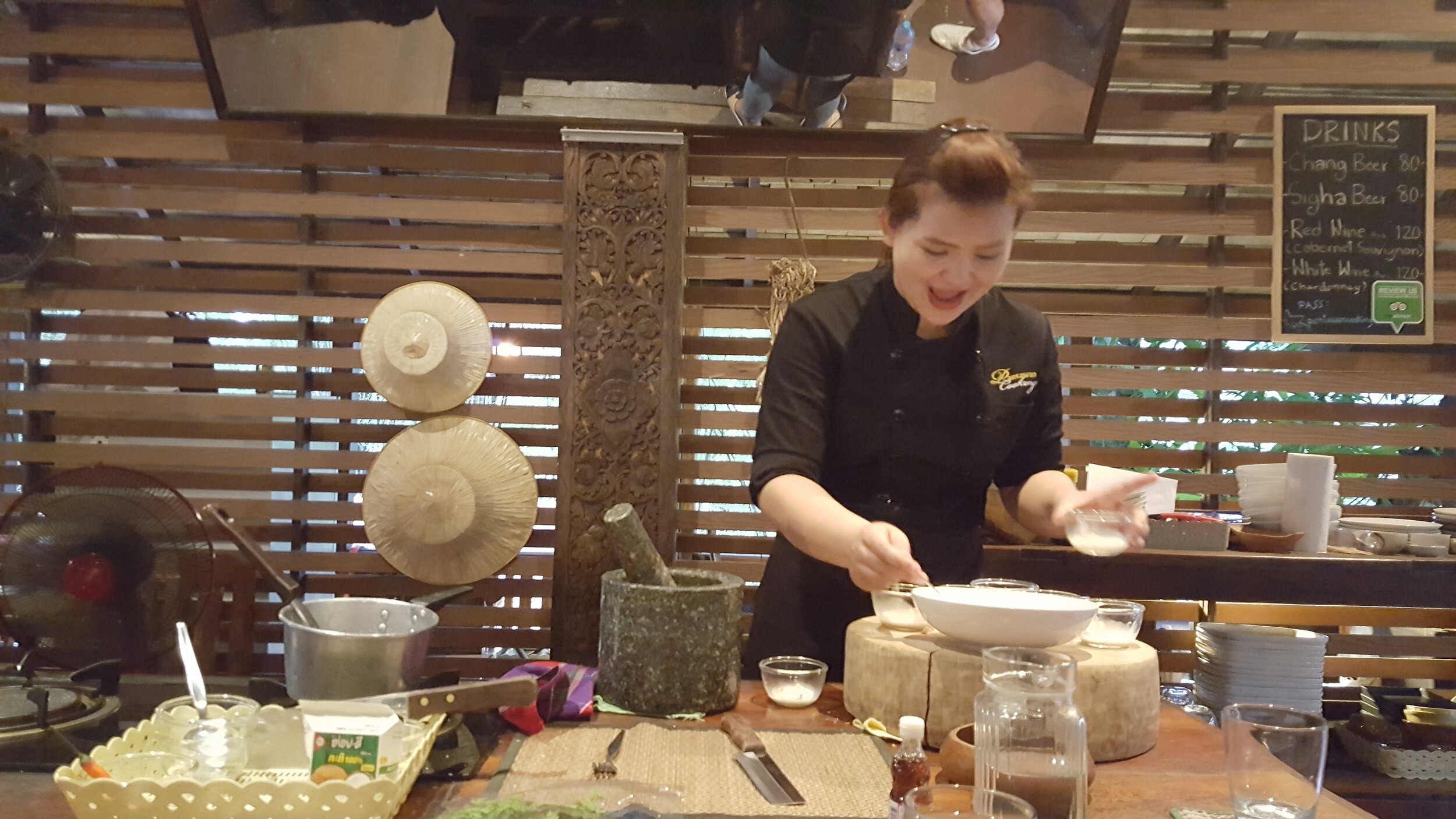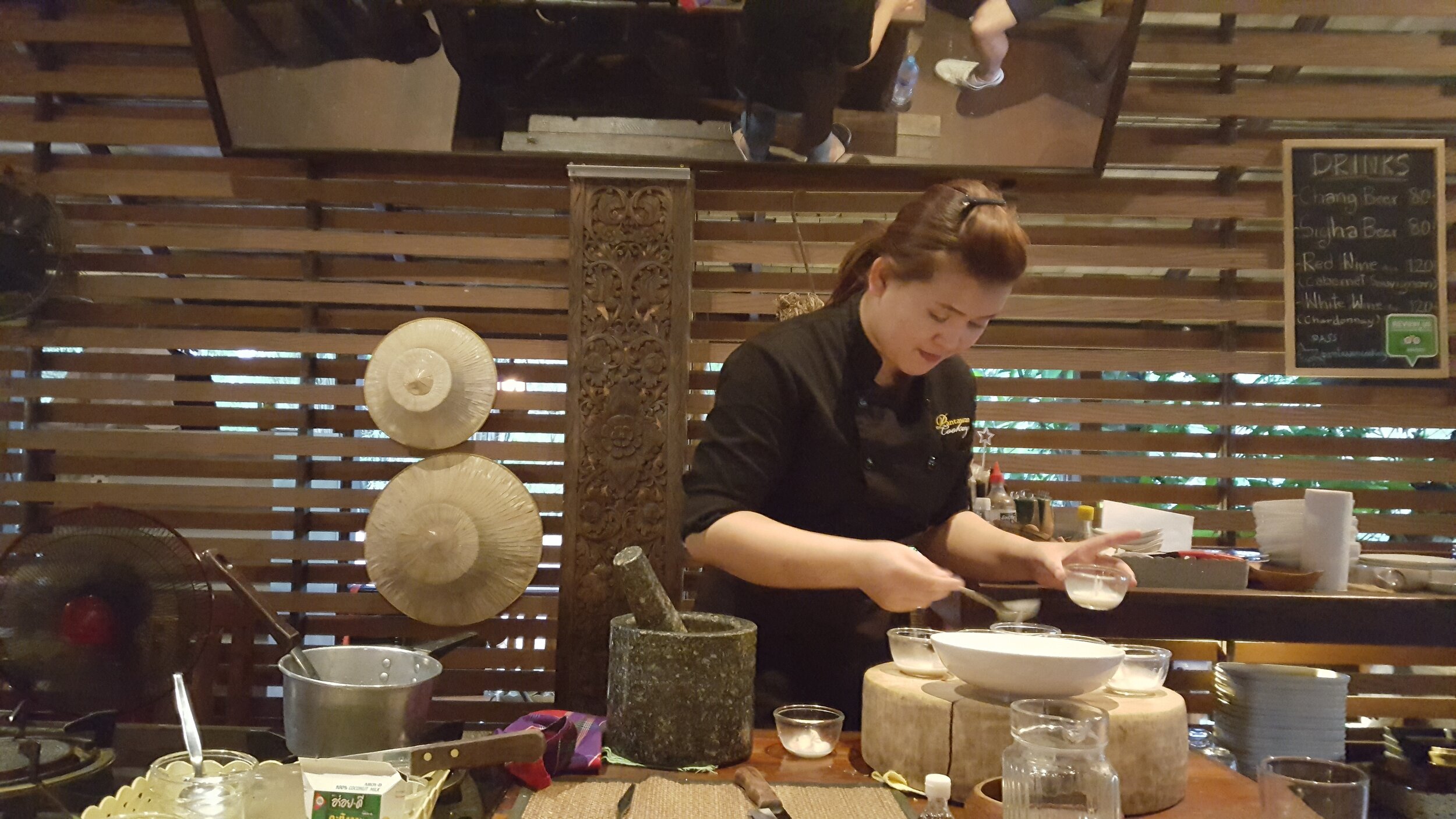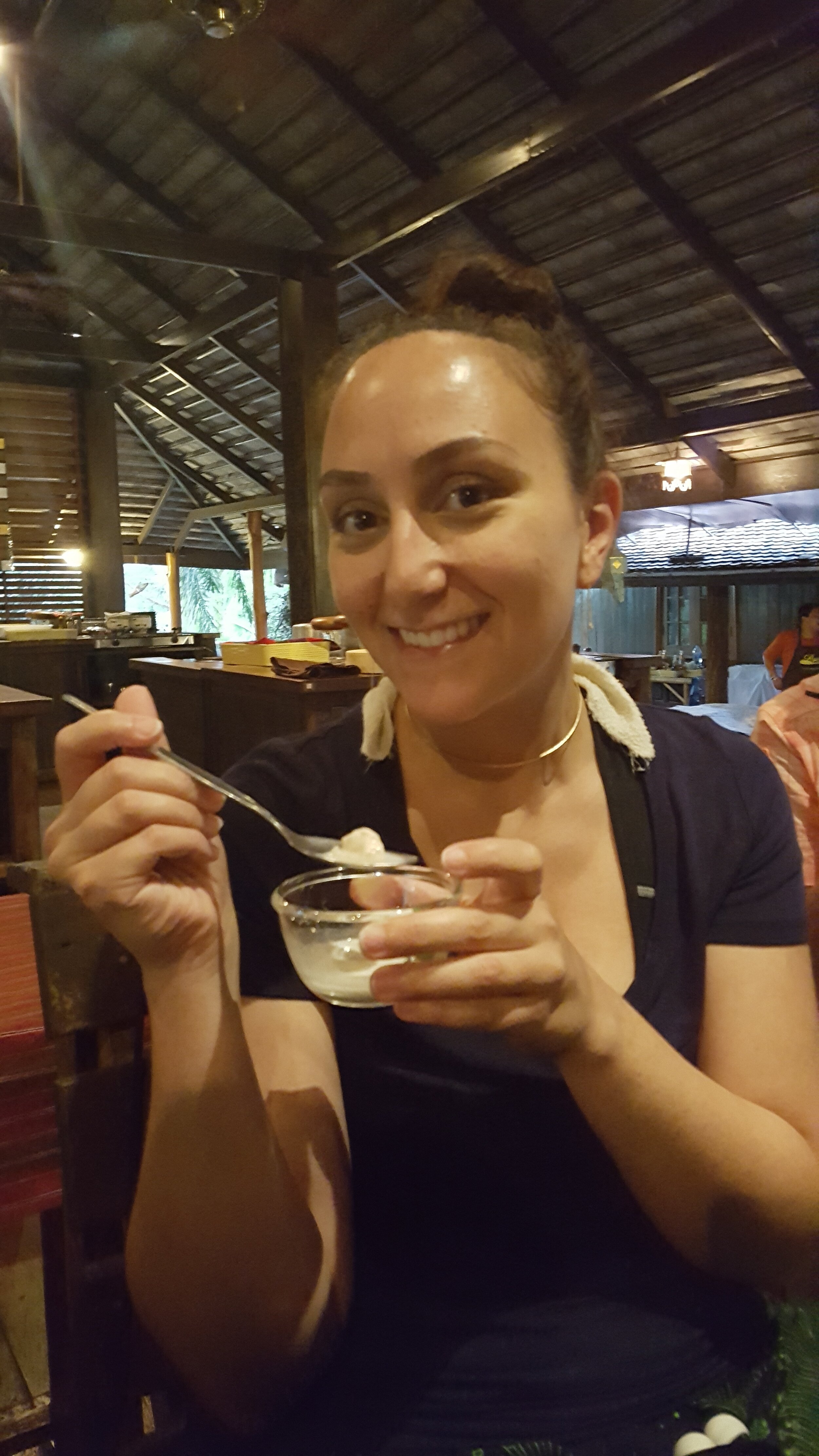Chiang Mai Diary
Our visit to Chiang Mai, Chiang Rai and the surrounding area was one of our favorite parts of this trip. With its plethora of Buddhist temples, monks, night markets, culinary experiences, Songkran (Thai New Year) celebrations in the streets, rural tribe people with their elephant companions, village people playing in the river and a lower density of tourists; Chiang Mai and the surrounding area felt rustic, authentic and it awakened our romanticized notions of life in an idyllic south east Asian setting. In sum, this part of the trip really gave us a different experience of cultural immersion that we needed in order to appreciate the country on a more intrinsic level and not just a superficial one (which is easy to do when you are in the islands surrounded by tourists and an endless supply of alcohol, parties, and beaches).
Chiang Mai arrival and Nina’s health scare
Our trip to Chiang Mai started much like any other; inconspicuously arriving by plane followed by a taxi ride to our hotel. We had arrived on the eve of Thai New Year known as Songkran. This is a rather festive occasion where people engage in the custom of taking to the streets to douse each other with water over three consecutive days. Large gatherings of locals and tourists alike typically walk around the streets with water guns, hoses, buckets, cups and anything else that people can find in order to throw water on each other. From the comfort of our hired taxi, we could see some signs of the festivities to come. Vendors in the streets were selling plastic water guns, buckets, sandals, lanyards and waterproof phone cases. Although we had done our research and knew to expect a bit of chaos in the streets, the following three days would prove to be a challenge for anyone who wished to stay dry. Indeed, over the next few days we would witness many uninformed tourists who had arrived with their luggage in tow being sprayed with water as they helplessly walked the streets in search of their hotel.
We arrived at our beautiful boutique hotel, Thannatee Boutique Hotel, in the late morning so that we would have some time to walk around and get our bearings. The hotel itself was very elegant and rustic. It was characterized by large wooden doors and a dark wood veneer all over the interior walls as well as an outdoor bonsai garden with a waterfall backdrop that fed into a koi fish pond, a charming little bridge over said pond and a décor that I had never seen before but nevertheless enthralled me with its motifs. The dark color palate of the hotel definitely fit my own personal preference, and we were charmed by such minutiae as the oval wood framed mirrors, the 1930s rotary phones and the various paintings and images carved into the walls, floors, and ceilings that depicted mythical motifs like anthropomorphic flying creatures, elephants and scenes of natural beauty. Finally, the hotel was inexpensive, considering that our stay coincided with a major public holiday (approximately $50 per night).
Shortly after checking into the hotel, Nina mentioned to me that she was still feeling ill since our stay in Koh Tao when she nearly passed out from heat exhaustion. Due to us being in a foreign country and Nina having shown few signs of improvement in her condition (although she gets major credit for rallying in order to attend the Full Moon Party on Koh Pha-Ngan), I decided to take her to the local hospital. Understandably, we were quite scared as even when we are home in the USA, we dread going to the hospital due to the astronomical costs and long wait times. Now we were faced with the prospect of having to seek emergency care in a developing nation.
We gathered our thoughts and stepped outside of the hotel in order to flag down one of the ubiquitous songthaews (a pick up truck that has been converted into a ride sharing taxi by turning the bed of the truck into an extra cabin) that were driving around the city center. At this point, we had no clue which direction these songthaews were headed, but every time one passed, we asked “hospital?” until one finally nodded in agreement. We got dropped off just a block or so from Chiang Mai Ram Hospital and we walked inside hoping that someone on staff spoke English. I’m really ashamed to admit this, but at the time my mind raced with thoughts such as: “Shaman doctors? Bark wood and tea leaves? Are they familiar with modern standards of medicine? Do they even have medicine? Will the facilities be clean? How much will this cost us?” To our surprise (or perhaps to my surprise) we found the lobby of the hospital to be clean, well lit, neat and perfectly maintained with not a smudge on the floor nor a pen out of place. In fact, I could have easily mistaken this hospital for any upper tier hospital back home in the USA, so this was reassuring. We noticed that there was a sign which indicated a waiting area for foreigners and another one for Thai citizens. We wandered over to the foreigners’ area and were checked in within minutes by a friendly English-speaking nurse.
Interestingly, all the nurses were wearing a uniform reminiscent of a bygone era. They wore white caps which resembled sailors’ hats, white block heeled shoes and white long skirt dresses with long sleeves. All the signs in the hospital had translations in English and even the drinking water came in disposable sealed cups. At the exact 30-minute mark from when we sat down our name was called and we were led into another room to meet with some nurses who ran a few diagnostic tests on Nina (blood pressure, temperature, etc.) and screened her with several questions related to her illness. Shortly after, we were escorted into the doctor’s office. He politely introduced himself, asked Nina some more questions relating to her illness and then ordered a series of tests to be conducted.
The laboratory results came back positive for influenza type B, which was a different strain of flu from the vaccine that we had received back home shortly before our travels. Luckily, it was only the flu and not some strange tropical disease I had feared. Nina was prescribed several medications to help deal with her symptoms and we were then led to the checkout counter to pick up the medicine and pay for the hospital services. This was the part that I feared second most because back home in the USA, medical expenses and medical debt are leading causes of personal bankruptcy. So, there we were, watching the nice lady at the checkout counter tallying up the cost and my heart raced.
She handed us the receipt and it read………. just a little bit over 4,000 Baht. I did a quick mental calculation and was confused because 4,000 Baht was the equivalent of about $125 USD. “Surely, this must be a mistake. There is no way that the total cost of the doctor, hospital, laboratory tests and four prescription medications equaled $125 USD”, I mused. Add to that, the fact that this hospital was efficient (a total of two hours spent from the time that we arrived to the time that we were discharged), clean and treated us with the utmost professional standards and this was perhaps the biggest culture shock of all. “Back home, you’d be charged $10,000 USD just for walking through the door, be treated with nonchalance and the entire experience would take more than five hours”, I further mused.
We hastily paid our bill and then left the hospital, tired and in need of a nap. As we had spent most of our early afternoon on the hospital visit and the corresponding commute, we decided to return to our hotel room and nap for the rest of the day. As such, we flagged down a songthaew and climbed into the back when to our surprise, we had our first encounter with a monk in an orange robe who happened to be riding as well. Instinctively, I bowed my head and clasped my hands together as a show of respect. Nina, however, tripped and face-planted right in front of him. I’m not going to lie. This would’ve been hilarious if not for the fact that we had just been to the hospital. On the ride back to the hotel, we could see small groups of tourists who were engaging in Songkran eve shenanigans. Most of them were young adults who took the opportunity to spray us with water guns as we were helplessly caught in afternoon traffic. The monk and I laughed, and little did we know that this was only the beginning.
We awoke from our long nap at the hotel in the early evening and since we were now hungry, we went outside to explore the town and get something to eat from one of the ubiquitous food stalls. Being the cautious type, Nina and I ordered boiling hot soup from a local vendor. Our reasoning was simple; we can reduce our chances of getting sick if we eat food that has been boiled. We walked around the area close to the ancient moat, just inside the old city walls and enjoyed the new sights and smells as well as watching the locals preparing for Songkran festivities, tourists crowding the street food markets and sitting in the plaza enjoying some Chang beer. We also walked into local stores, browsed merchandise and bought some essential items such as bottled water, sandals and water guns (for Songkran of course).
Later that evening, from our hotel room window, we witnessed some of the hotel staff in the alleyway singing, eating, playing music, laughing, and dousing each other with water from a spray hose. From an anthropological standpoint, I was intrigued by this custom. They were playing local music, cooking barbecue and were still wearing their hotel uniforms even while spraying each other with a hose. It was almost like watching a movie, with the camera slowly pulling away from our faces in the window and a narrator in the background saying something like “and in that little moment of joy, our travelers had come to realize that such simple pleasures in life are universally enjoyed by people no matter where they are in the world”. This wasn’t culture shock. No, this was cultural immersion.
Elephant Encounter & Rural Chiang Mai
“Eat a clump of rice!” I said to Nina in my cutest baby tone, as we ate our morning breakfast at the hotel. She was feeling better, seemed to be recovering from her flu and I figured that a full belly would help keep her feeling well. Plus, today we had booked an excursion to visit the elephants at Elephant Jungle Sanctuary and we would need our full strength as it was an all-day excursion. It’s important to note that this was not an ordinary elephant encounter where the poor animals were made to dance, perform tricks and ferry people on their backs through the jungle. This would be a unique experience to feed the elephants, hang out with them in the river and eat some local food from the Karen tribe people.
Since we had booked in advance through their website, we were picked up by one of their drivers in a silver pickup truck with the bed of it looking suspiciously like a songthaew. We climbed into the cabin of the truck and sure enough, the driver stopped at several areas in order to pick up some other passengers who had also booked an excursion through their hotels/hostels. Since there was no more space in the cabin, Nina and I were the only ones inside of the truck with the air conditioning. Our driver was of Karen descent himself, but not of the long neck variety that is often depicted in travel magazines or housed in camps and displayed for tourists. He was from a little town in the mountains surrounding Chiang Mai, whose name escapes me.
The drive up to the Elephant Jungle Sanctuary was quite scenic. Dirt roads, lush valleys, muddy rivers, gold colored temples juxtaposed with thatched roof huts and village people spraying each other with water during the all-day Songkran festivities gave us glimpses into the lives of the people who lived in the surrounding countryside. Picnic tables, colorful plastic chairs, and tables with umbrellas set up in the river were a common site, with what looked like families enjoying their meals in the river. Children and adults alike chased each other with hoses and threw buckets of water at each other with deadly accuracy. This reminded me of when I was a kid and my friends and I used to play with the hose in the backyard during the summer. I couldn’t help but smile at the thought. My 10-year-old self and the kids from the neighborhood would have loved Songkran.
After about an hour and a half of driving through rural Chiang Mai province, we finally reached our destination. Elephant Jungle Sanctuary is a very large swath of territory that has been designated as a nature preserve for elephants that have either escaped captivity or have been rescued from cruel animal handlers. As such, these majestic creatures roam freely throughout the jungle preserve and share a symbiotic relationship with the local Karen tribe. In fact, we were given traditional Karen tunics to wear so that the elephants would not be provoked into attacking us; instead recognizing us as a fellow Karen tribe member.
We disembarked from the truck and were briefed by a local guide on the activities that were planned for the day. We were told by the guide that our activities for the day would involve us feeding the elephants a combination of bananas (no peeling needed) and sugar cane. Afterwards, we were invited to come bathe with the elephants in the river after lathering them in mud. Wearing our Karen tunics, we were instructed to step out onto a small hill that overlooked the river next to the Karen village and wait. As we waited, the tour guides brought out buckets filled with small bananas and sugar cane and then we waited some more. Within minutes, a herd of elephants began appearing out of the jungle and the surrounding hills. These creatures walked over to us and held their trunks out as we fed them. Meanwhile, the baby elephant was running circles around us, occasionally reaching into peoples’ pockets or playfully headbutting us in the rear. It reminded me of the way that our dog used to play with us back home when she was a little puppy.
I couldn’t stop saying “baby elephant!” as I petted the baby elephant and chased him around with food. It was so much fun feeding and petting the elephants that Nina and I couldn’t stop smiling. For such large creatures the elephants were really gentle, friendly and playful as if they had an innate sense of humor. They were also incredibly empathetic to human emotion. Whenever an elephant looked at someone from our group and saw us smiling, they would instinctively flap their ears with excitement. They also had quick reflexes for such large creatures. Sometimes, when we got too close to their hind legs, they would instinctively kick out to the side.
After some time, we dumped the rest of the bananas and sugar cane on the ground and let the elephants eat on their own while we proceeded to an adjacent pavilion in order to eat our lunch which consisted of rice and chicken with a delicious broth and vegetables. Suddenly, it began to rain and at first, the elephants were unfazed. But the sound of metal clanking from the rain hitting the tin roof shutter of our pavilion caused them to flee back into the jungle out of fear. We could see them huddled up and hiding in the trees until the rain stopped, which is when they came back out of the jungle to continue eating.
We finished our lunch and changed into our bathing suits because now we were going to be giving the elephants a mud bath and then bathing them in the river. I must say, that being a germaphobe, Nina and I were a bit hesitant at first to get all muddy, so we proceeded slowly into the mud pond. As we were slowly easing into the mud pond, I felt a someone come up from behind me and throw a bunch of mud on my back and begin to smear it. When I turned around, it was one of the guides smiling and encouraging us to go and play. He was right. We were taking this way too seriously, so we got into the mud and started rubbing the elephants’ skin with it while occasionally throwing some mud pies at our fellow excursionists.
Afterwards, we made our way to the river, with the elephants following us and this is when things really got fun. The elephants started spraying everybody with water from their trunks and the baby elephant was diving underwater and then climbing up onto its mother’s back in playful manner. We engaged in one big water fight between the elephants, the people in the tour group and the guides. This went on for a while and I think it was everyone’s favorite part of the excursion. The cool, muddy river provided respite from the intense jungle heat and the experience of bathing with elephants in the river made for an unforgettable experience.
After we finished bathing the elephants, the Karen people who had been so kind to host us, used a mortar and pestle to make a concoction of medicine and bananas that they then proceeded to feed the elephants. The elephants ate the medicine and after standing around for some time, they disappeared back into the jungle as quickly as they had emerged. During this time, Nina and I rinsed off at a spigot and then made our way back to the pickup truck with our group that was scheduled to take us back to our respective hotels/hostels. Out of sheer luck, Nina and I were afforded the luxury of riding in the cabin of the truck, while everyone else in our group had to ride in the bed of the pickup and indeed this proved to be interesting on the ride back to Chang Mai.
As today was the first day of Songkran festivities, and we had witnessed the playful antics of the locals in the various villages on our drive up to the elephant encounter, Nina and I realized just how lucky we were to be sitting inside of the truck. Our driver had a good sense of humor. On the hour and a half ride back to Chiang Mai city, he offered us mandarin oranges to snack on while the poor souls sitting in the bed of the pickup truck got destroyed by an avalanche of spray hoses, water gun attacks and bucket launches of water that would take out an eye if it hit at the right angle. Our driver purposely slowed down to a crawl as we approached the main road in every single village so that our truck was now sandwiched between two sides and vulnerable to water attack. We laughed uncontrollably. Nay, we nearly cackled from the comfort of our seat in the cabin of the truck as our fellow excursionists who were seated in the bed of the truck were subjected to some of the most hilarious Songkran water attacks. A fellow traveler, in a vain attempt to defend himself from the water offensive, emptied his only bottle of drinking water into the crowd of village people. At one point there was so much water being thrown at the truck that I looked back and could only see colorful blurs rather than the people that they were supposed to resemble. They were unrecognizable beneath wave after wave of water attack. “Why are you slowing down?! For fuck’s sake keep going!”, they pleaded.
“Nice and dry, aren’t we?” said a fellow traveler in our group as he was being dropped off at his hotel in Chiang Mai city. Of course, he was referring to Nina and I since we were the only dry members of this tour group. “Sorry?” I muttered, unable to muster up any other words as I was both exhausted from the day’s activities and also amused by how much fun it was to see the locals in each village playfully dousing the truck with water on the ride back. ”No matter. He will have his revenge tomorrow when Nina and I take to the streets and participate in Songkran”, I mused. But for now, we needed to clean up, eat and get some rest because tomorrow we were going all in on the Songkran festivities.
Songkran
We awoke the next morning, got dressed and had breakfast at the hotel’s buffet just like we had done the day before, only this time Nina was feeling much better. A few days had passed since her worst flu symptoms and she was now looking and acting like her normal bubbly self, so we were eager to participate in the day’s festivities. We had two high-powered water rifles (purchased a few days prior), and a GoPro Hero 4 to capture all of the insanity that was about to happen that day as we stepped outside of the hotel and began looking for some people to soak. Indeed, as soon as we stepped outside, one of the hotel staff chased us with a water hose and soaked us first. Although I was expecting to get wet, just a few minutes into Songkran, Nina and I were absolutely soaked. The fact that it was an especially humid day made this a short-lived humiliation, however. Better to be soaked with water than be soaked with sweat.
We walked towards the main square, and as we got closer, we could see crowds of people in the streets. Some were walking around while others had entrenched themselves at a street corner or in front of a hotel and were launching water at people from a hose. Even crazier than that, we witnessed pickup trucks with an entire team of people in the bed of the truck doing drive by water shootings into crowds of people. Some clever groups even had huge barrels of ice water in the bed of the truck with them that they would use to refill their buckets and water rifles, shooting at people as they drove past them in the street. Whenever that ice water would find its mark, you would hear a scream followed by laughter, as that ice water was quite a shock to unsuspecting people. I felt especially sorry for people on motor bikes and scooters, as they had no choice but to absorb bucket after bucket of ice water to the chest and face while they tried to weave through crowds.
Nobody was safe from this all-out water war. Scenes of back and forth water going in all directions reminded me of one of those water fountains shows at a hotel, except that there was no synchronicity to music. This was pure improv and it was so much fun to experience. Everywhere that we walked and every corner that we turned, we could see people, young and old, tourist and local, chasing each other and throwing water like they were kids at a pool party. At one point, Nina and I ran out of water, so we decided to hang out with a group of locals and help them refill their water buckets with water from the nearby moat. I crouched down into the moat (which was a repulsive light green) and filled several buckets of water so that the kids in the group could have more water to continue playing. In exchange, the locals allowed us to refill our water from their barrels and switch to using some of their buckets and other launching devices so that we could continue partaking in the day’s festivities.
After several hours (which felt like minutes) of participating in this water madness, Nina and I decided to continue walking around the town to explore other areas and possibly find something to eat. We encountered so many temples in the city of Chiang Mai that at times it became impossible to distinguish them from one another. The vast majority of temples were small and medium sized but the largest and most impressive temple that we had the pleasure of visiting was “Wat Phra Singh”. This was a very large temple complex that had golden themes everywhere. There were golden Buddha statues, golden domes, gold tipped roof tops and in the center of the temple complex, there was a large golden dome flanked on its four corners by 4 smaller golden domes rested on a rectangular base that had golden elephants sticking out as if they were walking out of the golden block. There was also an outdoor circular shrine located just inside the entrance gates that was elevated and had steps leading up to it with a golden Buddha statue in the middle of it sitting in a lotus position.
Since we had arrived during the time of Songkran, there were interesting religious themes happening throughout our temple visit. Locals who were visiting the temple did so to pray and pay respects to the Buddha at the outdoor circular shrine. Monks were selling what looked like holy water (which was a concoction of water, some perfume and flower petals), white rose buds and various other trinkets. Additionally, throughout our entire visit we could hear a monk speaking into a microphone (it might have also been a recording since it continued without pause) who was speaking in a monotone manner, much like a priest who reads from the scripture. We of course had no idea what was being said, but we were able to gather enough contextual clues that we determined that it must have been part of a religious ceremony.
We observed several locals purchase holy water and a rose bud and then walk up the steps of the outdoor shrine, clasp their hands together and pray. They then proceeded to throw the entire cup of water on the Buddha statue, touch the water as it runs down the Buddha statue and then tap their head with that water. Afterwards, they laid the rose bud at the feet of the Buddha statue and left. It was very much like a spiritual cleansing ritual and Nina and I had another culture shock moment. We realized once again that despite religious differences, we were observing some fundamental similarities between our cultures. The respect for a statue of a venerated figure (Buddha) at a house of worship, the presence of religious stewards (monks), the practice of prayer, and finally, a cleansing ritual all while listening to a monk recite scripture. Indeed, anybody who is familiar with the major religions of the west could see that these practices were very similar to our own.
In that moment, we came to realize that Songkran is about much more than just having a giant water fight in the streets. It is about purification of one’s sins (possibly as a way of bringing in the new year) and paying respects to the Buddha. The manifestation of this has evolved to become a giant water fight in the streets with people cleansing each other by throwing water on each other. It also had a utilitarian reason. Since the weather during Songkran was really humid and warm, having water thrown on oneself was a welcome respite.
That night, after we returned to our hotel from the day’s festivities, showered and hung our clothes up to dry, Nina and I looked out of our window and sure enough, we could see the hotel staff spraying each other with the hose, playing music, eating barbecue, singing, laughing and dancing even while wearing their hotel uniforms. We observed them this time with renewed perspective; no longer just intrigued by the custom because for just that day we had become part of the custom.
Chiang Rai
Nina and I only had two more days in Chiang Mai and as our time in this wonderful city and region was coming to a close, we decided to explore the northernmost city of Chiang Rai on a day trip. Truth be told, we had actually planned to go to the famous temple of “Doi Suthep” in the mountains of Chiang Mai. However, we decided to take the day trip to Chiang Rai because we felt that there would be less tourists in Chiang Rai and we were really intrigued by the chance to visit “Baan Dam” (The Black Temple) and “Wat Rong Khun” (The White Temple). Part of our research for this trip to Thailand involved us looking through books from “Lonely Planet” and I’ll never forget when I turned the page to see Chiang Rai and a glorious picture of Wat Rong Khun (White Temple). My jaw dropped as I turned to Nina and said “Look, we’ve got to see this place.” Nina responded by showing me a picture of Baan Dam (Black Temple) and saying, “We have to see this place too.”
Through our hotel, we were able to hire a driver for the day for 4,000 Baht ($120 USD) to take us to Chiang Rai and back. The trip itself took about three hours just to get to Chiang Rai so our driver made it a point to stop at a local hot spring on the way there in order for us to stretch our legs, get something to eat and use the restroom. The hot spring itself was not very impressive and the name escapes me, but we took the opportunity to browse the local shop and buy a few items (some pants for Nina and a tunic for me). Perhaps the most interesting thing about the drive to Chiang Rai was the architecture of various buildings. The themes were dark colors and pointed roofs. Occasionally, we would pass by a gold roofed Buddhist temple but at one point we saw a huge wooden monk statue the size of a four story building perched atop a hill like some kind of religious destination point or perhaps paying homage to a revered monk, much like the mummified monk at Wat Kunaram or the way that saints are revered in western culture.
The landscape was scenic and quite rustic, with several changes in terrain from dense jungles to savannas, hills, valleys and grass that looked bright green juxtaposed with rural peoples and their domestic livestock roaming freely in their fenced in backyards. I remember thinking to myself how beautiful I find such rustic settings, as I sometimes grow bored of the concrete jungles and cookie-cutter suburban homes of our hometown. Nina seemed to be lost in thought, as I could see her completely absorbed in gazing out over the Chiang Rai countryside. She mentioned how the trees in this part of the country looked a lot like the trees that she had imagined would feature in an African savanna and I concurred.
After we arrived in Chiang Rai, we had our driver take us directly to Wat Rong Khun (White Temple) as we had eagerly awaited this moment ever since I first noticed it in a “Lonely Planet” book. It looked even more stunning in person, with its defining bridge crossing over a crowd of hands reaching up toward the heavens. The entire temple complex was white and featured mythical images of dragons, warriors armed with swords and architectural features that I do not have the vocabulary to explain but nevertheless left me speechless as to how any human being could conceive of such a thing. It reminded me of Renee Descartes when he outlined his logic for his “I think, therefore I am” conclusion in his “Discourse on the Method” that I had studied in college. In his work, Renee Descartes posited that everything must be derived from reality. Even an artist that paints a monster cannot conceive of such a creature if the sum of its parts are not based on creatures that already exist and are known to the artist. Much like the typical drawing of a Devil. The creature itself is fictional but the sum of its parts (the horns, hooves, tail, beard, etc.) are based on things that we already know to exist. Wat Rong Khun executed this idea with absolute mastery because the architecture and motifs were unlike anything that I had ever seen before, yet it was derived from the existing mythical elements of Thai culture.
After we finished visiting Wat Rong Khun, we had our driver take us to Baan Dam (Black Temple). The temple was appropriately named, as its motifs were the converse of the White Temple. The color of everything was black and the architectural styles were equally impressive, mythical and macabre. This was Nina’s favorite temple to visit and we had a really nice time exploring the different sections of this Temple, the surrounding buildings and its parks
After some time, we decided to head back to Chiang Mai as the trip back to our hotel would take another three hours and the sun was starting to set. We bid farewell to Chiang Rai for now, went back to our hotel and spent the night digesting this experience.
(Nina does a much better job of elaborating on our trip to Chiang Rai, Click here to read)
Cooking Class
On our last day in Chiang Mai, we decided to take a cooking class as we had come to understand that the region of Chiang Mai is home to various cooking schools and is considered by some to be the culinary capital of Thailand. As such, we decided to book a class with “Pantawan Cooking School” because we had seen them featured in a travel video on Youtube (the name escapes me) while we were doing research for our trip to Thailand some months back. I must say that Pantawan Cooking School did not disappoint. The entire experience started off with one of their drivers picking us up at our hotel and then taking us to the local market where we would be purchasing the ingredients to cook our meals. In fact, we had already been to this local market throughout our stay in Chiang Mai but we had very little knowledge of the foods that the vendors were selling so we were happy to have someone explain the various spices and the dishes that they are used in.
Our guide walked us around the local market, and we were quite pleased that he was so eager to share his knowledge of the various foods as well as the local customs regarding food. One of the more interesting things that we learned was that the local vendors use fans affixed above the food with towels attached to the blades in order to swat flies away from the food. Perhaps one of the most interesting things that I saw were fresh fish that were still squirming inside the bags in which they were being kept. This creeped me out because as I moved my face closer to observe them, they would squirm as if they wanted to jump out at me and this in turn made me jump back. Our guide walked us past food stalls that sold scorpions, insects, worms, chicken heads, chicken feet, duck and other local specialties that my germaphobe self begrudgingly sampled.
After walking around the market and buying some ingredients to be used for the cooking class (cilantro, limes, garlic, red chili peppers, lemon grass and a variety of other spices) we hopped into the van provided by the cooking class and we went to the property where the cooking class would take place. The property itself looked like a large farm or ranch, with a large pavilion in the middle adorned with tables and cooking stations. Our instructor chef, called Yam, was very welcoming and had a good sense of humor. She mentioned that on this day we would be preparing a coconut milk soup known as “Tom Kha Gai”, pork salad, and Pad Thai.
During our first demonstration of “Tom Kha Gai”, we used a mortar and pestle to grind down the spices and it was during this time that Yam shared with us some cultural wisdom regarding the grinding of spices. Apparently, in traditional northern Thai culture, if a woman made a lot of noise while grinding the spices in the mortar and pestle, then she was considered a good wife because she was exerting herself in order to feed her family. On the other hand, if a woman would grind the spices softly, then this was taken as a sign of a lazy wife. I’m not sure how true this was, but it did make everyone work harder to grind the spices.
After we had cooked all the meals that were taught to us by Yam, we sat at a large table inside the pavilion and ate our meals. They were all delicious and indeed, this was easily the best meal that we had in our entire trip to Thailand. Friendly conversation with our fellow tour group members revealed that many were here for various reasons. A young French family was among our group, and they had come here to study cooking because the husband was a chef back home in France. Another couple seated next to us (who were gracious enough to take a picture of Nina and me) had come here from Australia for the weekend as a fun date idea. And of course, Nina and I had come here because we were inspired by season one of “The Amazing Race” to look out at the horizon and discover for ourselves faraway places while we still have precious time on this earth. What better complement to that adventurous spirit than to learn how to cook meals from our travels?


